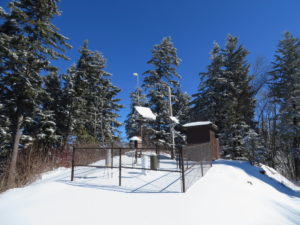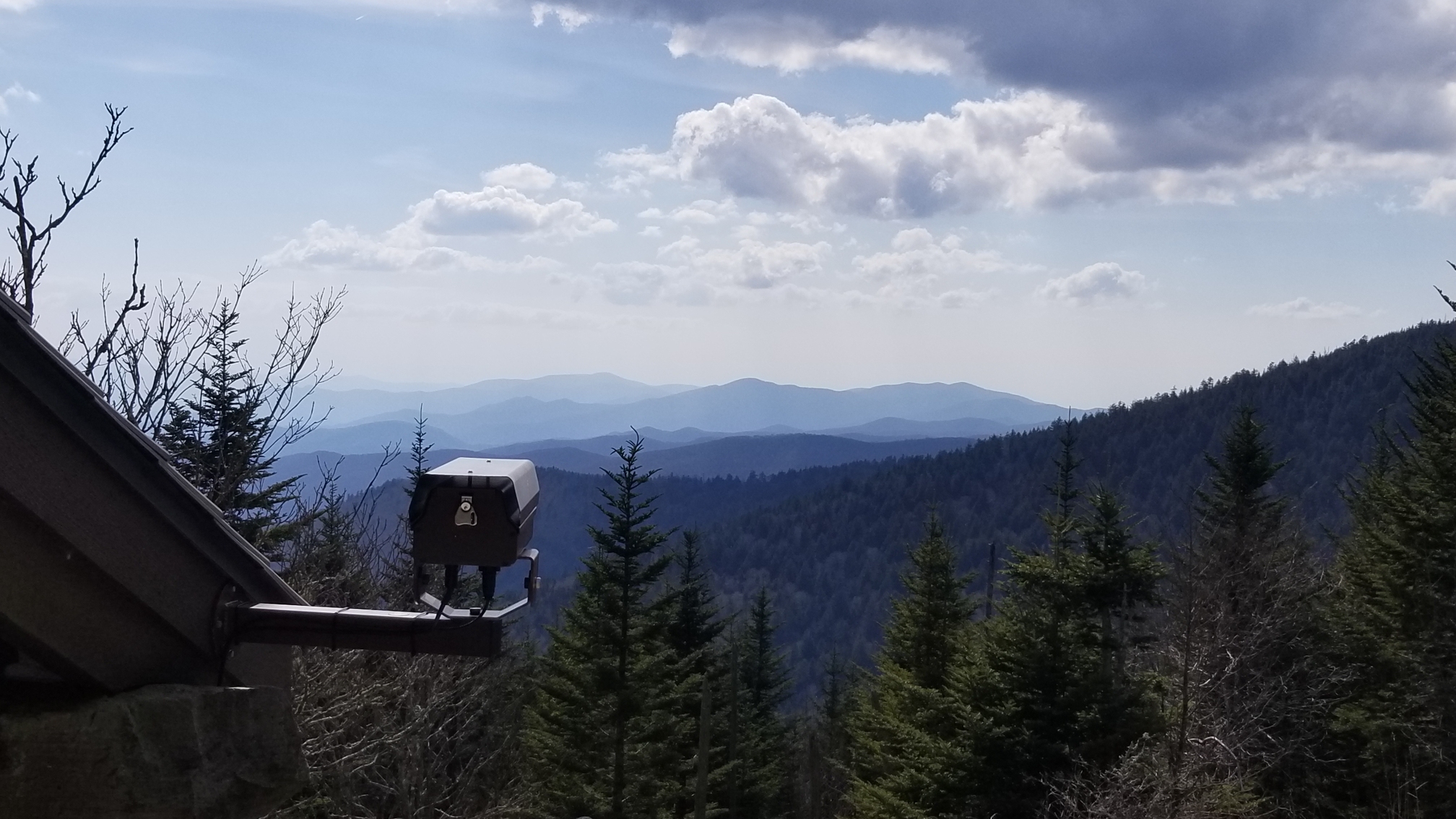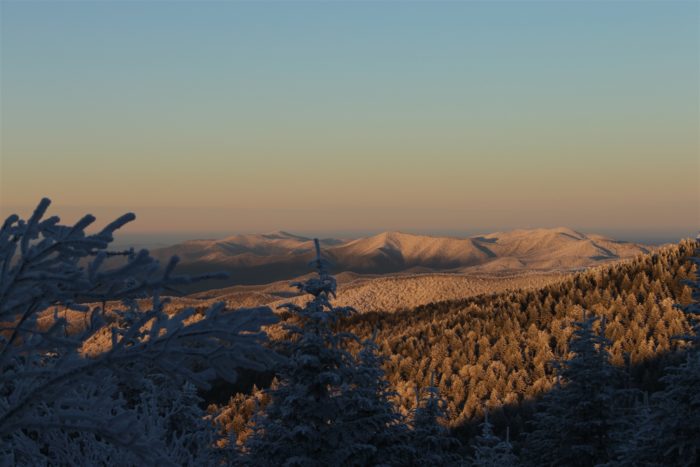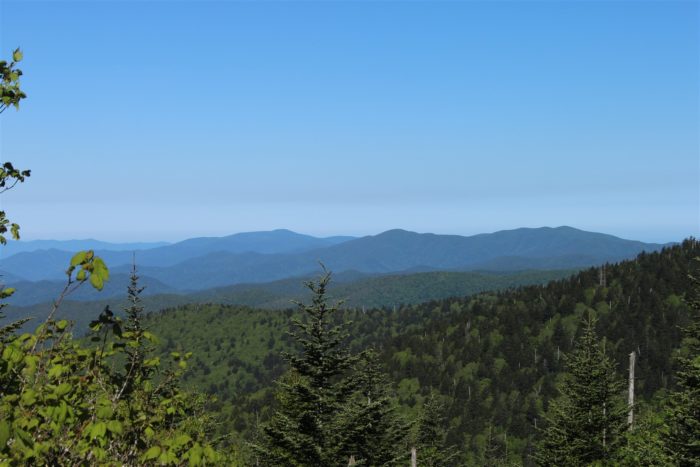by Julie Dodd
The GSMNP webcams are a great way to have a view of the Smokies wherever you are. The webcams also are an important part of how GSMNP evaluates the park’s air quality.
“The amount of hits for the webcams is huge,” said Jim Renfro, GSMNP Air Resource Specialist. “They are a great portal into the park.”
Two new webcams — the Clingmans Dome webcam and the Newfound Gap webcam — became operational in May 2018 and are funded in part by Friends of the Smokies. These two webcams join the other two GSMNP webcams — one at Look Rock, installed in 1998, and the other at Purchase Knob, installed in 2003.

I asked Renfro about the webcam system and the contributions of these two new webcams.
FOTS: How do the new webcams at Clingmans Dome and Newfound Gap contribute to the GSMNP webcam system?
Jim Renfro: Webcams are always among our most popular online content. We hear from many of our visitors that these views help them feel connected to the park even if they are very far away or have never had a chance to visit in person. Local residents and visitors also love the webcams and use them for trip planning.
Windows into popular GSMNP destinations
The new Clingmans Dome and Newfound Gap webcams provide windows into two of the most popular destinations in the park along with weather conditions and air quality information. These are views into the North Carolina side of the Park from the Appalachian Trail and Tennessee/North Carolina state line.
The Newfound Gap webcam operates year round. The Clingsman Dome webcam is operational April through November.
The Newfound Gap view looks south and the Clingmans Dome view looks to the southwest. A real-time view of the road and weather conditions in the Newfound Gap parking area helps us manage the Newfound Gap road during inclement weather.
Webcam data helps maintain clean, clear air
FOTS: How does the data collected by these webcams help the Park?
Jim Renfro: Air quality is a critical resource to monitor and protect. Understanding the status and trends of weather (winds, temperature, humidity, rainfall, snowfall, and solar radiation), ozone, particulate matter, and visibility are important to the NPS mission of making sure we maintain clean and clear air for current and future generations.
Most visitors expect clean air when they visit the Great Smoky Mountains National Park. But, for many years air quality in the park violated the Clean Air Act by exceeding public health standards for ozone and particulate matter.
Our air quality data documents air quality conditions and helps find solutions for restoring and protecting the park’s air quality and ecosystems.
The good news is that air quality continues to improve and is currently meeting air quality health standards in both the park and nearby urban areas.
For Air Quality Awareness Week (April 29-May 3), the park published an air quality story that ground-level ozone levels in GSMNP have dropped to the lowest levels since the mid-1980s.
Clean, clear air is also essential for appreciating scenic views. On a clear day, the vibrant colors and rich textures of the Smoky Mountains can seem to go on forever. On hazy days, scenic views are often obscured by haze that reduces how well and how far people can see.
Visibility-reducing haze is caused by tiny particles in the air. Pollution-caused haze typically appears as a uniform whitish haze, different from the natural blue mist-like clouds for which the Smokies were named.
Significant improvements in park visibility have been documented since the 1990s. Still, visibility in the park is a long way from the Clean Air Act goal of no human-caused impairment.
Webcams document visual conditions in park
Webcam images play an important role in documenting the visual conditions in the park.
Our archive of pictures allows researchers to look back and “see” what the view looked like on days when either high or exceptionally low levels of pollution are measured in the park. These images also capture both air pollution and weather-related events like smoke from wildfires, snowstorms, and the occasional rainbow.
FOTS: What’s involved in monitoring and maintaining the webcams?

Jim Renfro: High-resolution digital images from the cameras are updated every 15 minutes.
In addition, near real-time air quality data and meteorological data (hourly averages) are also provided to display current air pollution levels for the public and staff.
Images and data are collected by on-site instrumentation and transmitted via cellular modem or satellite back to a centralized server where they are processed for presentation on NPS websites.
Webcams and monitoring equipment must be routinely checked, serviced, maintained, repaired, and calibrated to ensure accuracy and availability.
FOTS: How is financial teamwork important to the webcam network?
Jim Renfro: The Clingmans Dome webcam is part of the PhenoCam Network. This project is supported by the following park partners: Friends of the Smokies, Great Smoky Mountains Association, National Weather Service, Tennessee Valley Authority, National Park Service Air Resources Division, and Air Resource Specialists, Inc.
FOTS: Who is involved in working with the GSMNP webcam system?
Jim Renfro: Ethan McClure (Air Quality Technician), Paul Super (Science Coordinator), and I (Air Resource Specialist) help to maintain the webcams and air quality monitoring network in Great Smoky Mountains National Park.
*****
The photo at the top of the post is the webcam at Clingmans Dome. Thanks to Jim Renfro for providing the photos.
The Clingmans Dome and Newfound Gap webcams are one of the 2019 Park Projects funded by donations to Friends of the Smokies.


